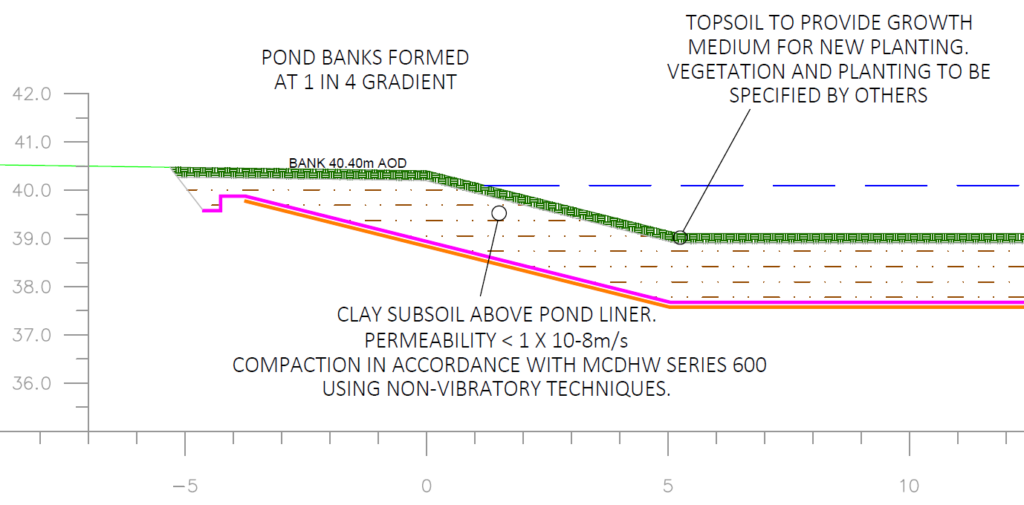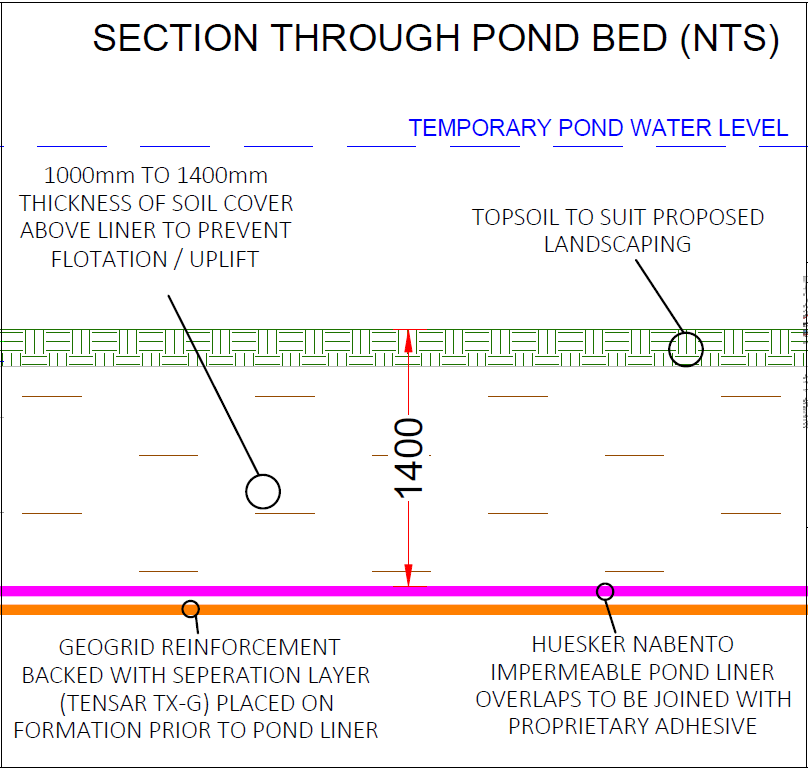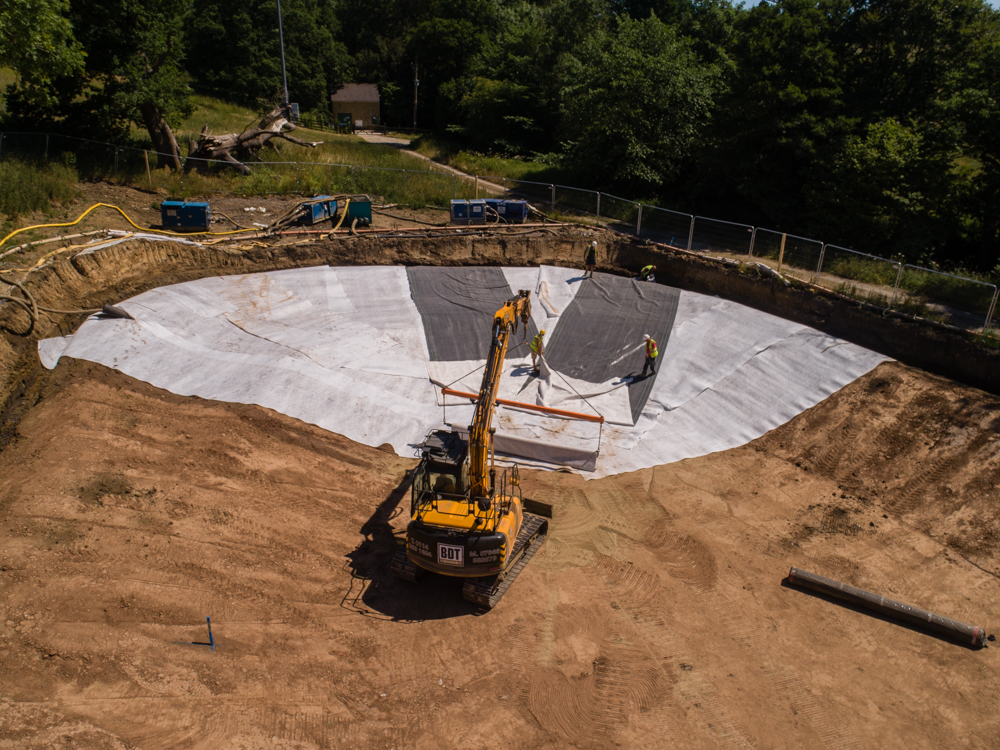Managing surface water and storm events is an increasingly important consideration for landowners and developers. New regulations and planning constraints require Sustainable Drainage Systems (SuDS) to be integrated on and around new development sites to minimise surface water run-off and reduce flood risks.
There are a wide range of SuDS options available to developers including ponds, wetlands, swales, soakaways and filter drains, all of which are designed to mimic the natural cycle of water by retaining close to where it lands. The requirement for an attenuation pond can sometimes be set within planning to provide a biodiversity net gain.
Our focus in this article is on attenuation ponds and basins, which are designed to collect and store surface water during heavy rainfall events and subsequently discharge it at a slower rate to minimise the risk of flooding. For site located in areas of low lying land, such as those located close to rivers or the sea, the presence of shallow groundwater can pose a risk to attenuation features. If attenuation basins are constructed beneath the groundwater table, they can become flooded by groundwater which reduces their storage capacity.
GRM are regularly appointed by developers to assist their drainage engineers with the detailed geotechnical and hydrogeological design of attenuation ponds and basins, where site constraints mean that they cannot be shallowed to sit above the groundwater table or substituted for an alternative system. In such cases, engineering measures are required to prevent groundwater ingress from flooding the basin and to maintain enough dry storage capacity. Such measures can involve placement of an impermeable pond liner at a sufficient depth, with enough soil above the liner to resist the buoyant groundwater pressures which can cause the base to heave and compromise the integrity.
Where shallow groundwater is present, ground investigation and groundwater monitoring at an early stage of development is needed to help to identify the potential risks from shallow groundwater, which could be used to specify an alternative drainage system such as shallow swales or attenuation tanks. Where these are not possible, long term groundwater level monitoring is required, often over 6-12 months, coupled with detailed assessment of the permeability of the underlying soils, as dewatering such as sump pumping or well pointing may be required to facilitate construction.
If you appoint GRM at an early stage of your development project, we can determine whether the soils are potentially suitable for infiltration drainage systems and monitor groundwater levels at your site to see if shallow groundwater poses a risk to infrastructure. We can then collaborate with the projects drainage engineer to discuss how it may be possible to adapt the drainage strategy or to provide advice on likely engineering solutions for budgeting.
Please get in touch via your main point of contact at GRM or for new enquiries email richard.upton@grm-uk.com or call 01283 551249.




